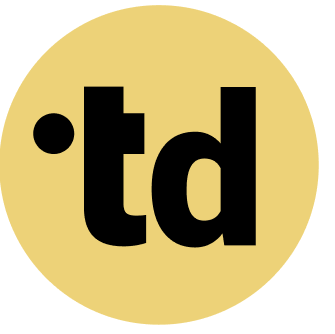Key Takeaways
Uneven workload distribution is a primary driver of stress, affecting 35 percent of employees and leading to burnout.
Successful task reallocation starts with creating full transparency of existing roles, responsibilities, and capacities.
Integrating AI agents to handle administrative work can free up over 50 percent of an employee's time for more strategic tasks.
In many workplaces, overload is the default setting. This constant pressure leads to burnout, with a staggering 37 percent of German employees reporting these feelings in late 2022. The real issue often is not the volume of work but its uneven distribution. Learning how to reallocate tasks based on capacity is the start of a hero's journey for your team. By transforming chaos into clarity, you empower your people to conquer overload. With teamdecoder, you get the tool to map out every role and responsibility, making space for hybrid teams of humans and AI to thrive together in a new era of organizational development.
Practical Framework for Team Architects
As a Team Architect, you can apply these principles to your organization:
- Map Current State: Document existing roles and responsibilities using a tool like teamdecoder.
- Identify Gaps: Where are roles unclear? Where do humans and AI agents overlap?
- Define Clear Boundaries: Specify which tasks are handled by humans vs. AI agents.
- Create Accountability: Assign clear decision rights for each role.
- Iterate and Improve: Continuously refine based on team feedback.
Recognizing the Alarming Signs of Team Overload
When workloads are unbalanced, the symptoms are hard to miss. For 35 percent of employees, the unequal distribution of tasks is a primary source of stress. This imbalance erodes performance over time, costing the German economy an estimated 9 billion euros annually in lost productivity. Psychological stress from work resulted in 59 million lost workdays in a single year. This is not just about feeling busy; it is a systemic issue. Teams running on fumes for months see a measurable drop in both cognitive and physical output. This decline directly impacts your workload management strategy and slows down progress. Recognizing these signs is the first step toward building a more sustainable and productive team structure.
Creating a Transparent and Balanced Task Ecosystem
You cannot fix what you cannot see. The journey from chaos to clarity begins with a transparent view of who is doing what and how much they can handle. This is where you build clear workload planning. Companies that use data-driven decision-making for resource allocation improve their efficiency by some on average. True transformation happens when you map out every task and role, creating a clear foundation for your team. This clarity allows you to see capacity gaps and opportunities in real-time. It turns reactive adjustments into proactive organizational development. This visibility is the foundation for reallocating tasks effectively.
A Framework for Effective Task Reallocation
Once you have clarity, you can apply proven strategies to reallocate work. Team architects can use these frameworks to match tasks to real-time capacity. Here is a simple three-step approach to guide your efforts:
- Measure Team Capacity: Identify the roles and skills you have. Understand the total available hours versus the hours already committed to projects.
- Analyze Workload Distribution: Use a tool to see who is over- and under-utilized. A skills matrix can reveal hidden talents, increasing efficiency by up to a portion of when you match the right skills to tasks.
- Track and Adjust in Real-Time: Monitor your team's scheduled hours against the actual time spent. This allows you to make dynamic adjustments as priorities shift.
- Conduct Quarterly Capacity Audits: Use data to review workload distribution every three months and make proactive adjustments.
- Empower with Autonomy: Give teams the visibility to manage their own capacity and make smarter decisions about taking on new work.
- Use a Centralized Platform: A single source of truth for roles and responsibilities prevents confusion and makes reallocation simple.
- Match Skills to Tasks: Continuously update your understanding of team skills to ensure the right people are on the right tasks, boosting job satisfaction.
This structured process helps you move from guesswork to a clear, data-backed method for capacity planning.
Sweet Teams Are Made of This: Integrating Humans and AI
Modern teams are hybrid, blending human expertise with AI efficiency. Integrating AI agents to handle administrative work can free up over a significant number of an employee's time for more strategic tasks. This is a core part of modern dynamic resource allocation. Companies that rapidly reallocate talent are more than twice as likely to report strong performance. By automating routine work, you not only balance human workloads but also elevate your team's focus to higher-value activities. You can try teamdecoder for free to see how this works. This hybrid approach makes your entire organizational structure more resilient and adaptive to change.
The Results of Smart Reallocation: More Flow, Less Burnout
When you reallocate tasks based on capacity, the results extend beyond just getting more done. Agile firms that adapt quickly see a some increase in productivity on average. Organizations with effective communication around roles and workloads are some more likely to succeed in their projects. This clarity reduces the risk of burnout, which affects nearly half of all German employees. By creating balanced workloads, you build a foundation for a healthier, more engaged, and higher-performing team. This is how you achieve sustainable strategic workload planning.
Make Bots and Humans Click: Building a Resilient Team
Building a resilient team requires a continuous, dynamic approach to task management. It is not a one-time fix. Here are four ways to maintain balance as your team grows:
This ongoing process ensures your team can handle change without becoming overloaded.
More Links
Wikipedia provides a comprehensive overview of work organization.
The German Federal Statistical Office (Destatis) discusses workplace stress and its impact on the quality of work.
The Hans Böckler Foundation discusses how high workload can lead to illness.
The German Federal Ministry of Labour and Social Affairs provides information on the German Working Time Act (Arbeitszeitgesetz).
The German Social Accident Insurance (DGUV) focuses on prevention in the workplace.
The Weizenbaum Institute offers a publication related to digital work and its challenges.
The Hans Böckler Foundation also explores the relationship between shorter working hours and higher productivity.
FAQ
How do you determine team member capacity?
To determine capacity, start with a team member's total available work hours, then subtract time for meetings, administrative tasks, and breaks. The remaining time is their true capacity for project-specific work. This should be tracked and adjusted based on real data.
What are common signs of poor task allocation?
Common signs include frequently missed deadlines, high levels of employee stress or burnout, some team members consistently working late while others have little to do, and a general lack of clarity on who is responsible for what.
How can reallocating tasks improve team efficiency?
Reallocating tasks based on skills and capacity ensures that work is assigned to the person best equipped to handle it, which can increase efficiency by up to 20 percent. It also prevents bottlenecks caused by overloaded team members, improving the overall flow of work.
Can you reallocate tasks in a hybrid team?
Yes. In a hybrid team, it is even more important to have a clear, centralized system for tracking tasks and capacity. Using a platform like teamdecoder allows managers to see workloads regardless of where employees are located and reallocate tasks to balance the load across the entire team.





